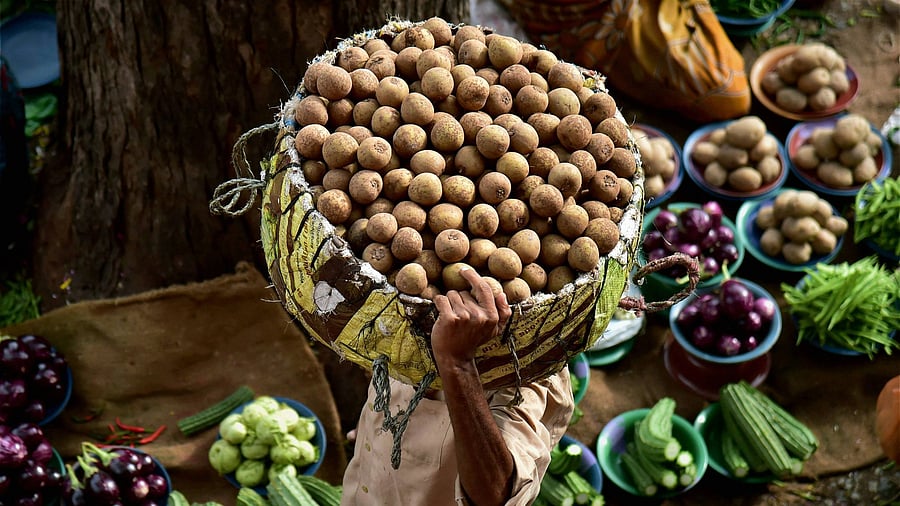
Sapota
Credit: Special Arrangement
Bengaluru: As India races to build additional carbon sinks, scientists from the Indian Institute of Horticultural Research have highlighted the need to assess the carbon sequestration capacity of fruit plantations.
A recent study on sapota shows that farmers capture millions of tonnes of CO2 while cultivating the humble fruit.
Published in 'Current Science', the study by AN Ganeshamurthy, Emeritus Scientist, ICAR-IIHR, estimates that sapota plantations in 12 states, including Karnataka, and two Union Territories have stored 10.92 million tonnes of carbon, equivalent to 40.1 million tonnes of CO2.
Researchers analysed data from these regions, assessing below-ground biomass of sapota trees, soil carbon, litter, weed biomass and other factors. The average carbon sequestered per tree ranged from 106.06 kg to 178.56 kg, with a national average of 143.5 kg per tree.
The orchards also enrich soil organic carbon (SOC). In agricultural lands, SOC levels fluctuate in the initial years before stabilising. Sapota orchards aged 25 years or more have SOC levels comparable to forests. Karnataka recorded the highest soil carbon stock in major sapota-growing regions at 77.14 tonnes per hectare.
In 2019, Ganeshamurthy and others estimated that India’s mango orchards sequester 285 million tonnes of CO2 over a 50-year lifespan, equivalent to the annual emissions of 60 million cars.
The study emphasised the importance of evaluating India’s expanding perennial horticulture and its impact on carbon fluxes. Securing carbon credits for such plantations, it said, will benefit farmers and local communities.
“Tropical fruits have a big market. Sapota, despite its storage limitations, is a crop hardier than mango. It comes up even on marginal lands and is an evergreen tree. Their role beyond agro economics should be recognised,” Ganeshamurthy said.
While fruit orchards cannot be equated with forests, Ganeshamurthy stated that assessing their carbon-sequestering role will help India report more accurate carbon stock figures.
India’s updated national contribution under the Paris Agreement targets creating 2.5–3 billion tonnes of CO2-equivalent carbon sinks through additional forest and tree cover by 2030.